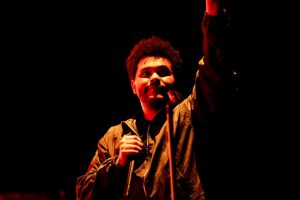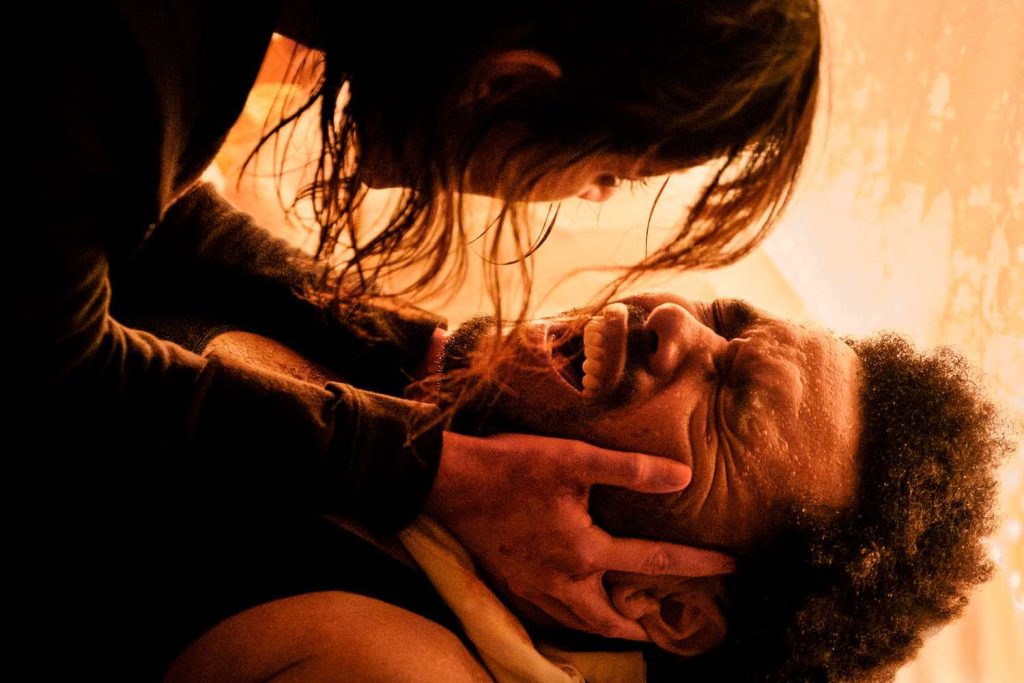World News
The Weeknd’s Mysterious Masterpiece: Inside the World of Hurry Up Tomorrow
From Pop Icon to Auteur: The Weeknd’s Bold Leap into Film
Abel Tesfaye—known worldwide as The Weeknd—is no stranger to reinvention. From redefining the sound of contemporary R&B to headlining the Super Bowl halftime show, Tesfaye has consistently pushed artistic boundaries. Now, he takes a bold new leap—into the world of cinema. His debut feature film, Hurry Up Tomorrow, is a surreal psychological thriller that serves not only as his entry into filmmaking but also as a deeply personal statement of identity, creativity, and existential fear.
Co-written with acclaimed director Trey Edward Shults (Waves, It Comes at Night) and The Weeknd’s longtime collaborator Reza Fahim, the film stars Tesfaye himself in the lead role. He portrays Abel, an insomniac musician grappling with mental and emotional instability. The project is a companion piece to his upcoming sixth studio album, also titled Hurry Up Tomorrow. In a deliberate fusion of film and music, Tesfaye crafts a narrative that mirrors his real-life emotional turmoil—including a 2022 incident where he lost his voice mid-concert, which he later attributed to deep psychological stress.
The film also stars Jenna Ortega as Anima, a mysterious presence who acts as both muse and mirror, and Barry Keoghan as Lee, Abel’s concerned yet distant manager. With its artistic roots and thematic depth, Hurry Up Tomorrow isn’t just a movie—it’s a cinematic canvas of inner chaos and catharsis.

Embracing Silence: A New Kind of Storytelling
In a cinematic landscape dominated by explosive trailers and spoiler-heavy marketing, Hurry Up Tomorrow opts for something radical: mystery. The film’s promotional materials are intentionally vague, with trailers that offer mood over plot and symbolism over clarity. Tesfaye and Shults made a conscious decision to withhold narrative details, believing that the modern audience still craves surprise and engagement over spoon-fed storytelling.
Tesfaye has openly criticized current marketing trends, saying, “It’s always like these three-minute trailers that give out the whole plot because they want people to come to the theater. We trust the audience.” His trust reflects a deeper respect for the audience’s intelligence and willingness to engage with complex, abstract art.
This approach extends beyond just advertising. The film’s structure is designed to be interpretive rather than linear, encouraging viewers to explore multiple meanings and theories. Director Shults described it as a layered experience, one that “can be taken at face value or dissected for deeper meaning.” For a generation raised on Reddit theories and TikTok deep dives, this method may prove both refreshing and rewarding.
By resisting the formulaic storytelling of conventional cinema, Hurry Up Tomorrow not only reaffirms Tesfaye’s status as a trailblazer but also challenges the industry to rethink how stories can be told—and how audiences can be trusted to find their way through the labyrinth.
Psychological Shadows and the Duality of Self
At its core, Hurry Up Tomorrow is a haunting exploration of self-identity and inner dissonance. Tesfaye’s character Abel is more than just a fictional musician—he’s a proxy for the artist himself, confronting the emotional wreckage left behind by fame, fear, and fractured relationships. As Abel spirals deeper into insomnia and anxiety, he encounters Anima (played by Jenna Ortega), a ghostly yet intimate figure who forces him to confront his suppressed trauma.
Ortega describes Anima as someone who “feels very neglected and unseen,” a manifestation of what it means to care for someone who avoids confronting their pain. Her role is not that of a savior but of a spectral guide, challenging the protagonist to engage with his shadow self. This dynamic forms the emotional crux of the film, portraying a man at war with his mind.
Tesfaye’s willingness to blur the lines between fiction and reality—drawing from personal experiences like his voice loss incident and the mental toll of performing—gives the film an authentic psychological weight. The character’s descent into a dreamlike world of paranoia and beauty reflects the mental gymnastics of self-denial, public image, and private anguish.
Barry Keoghan’s character Lee adds another dimension, representing the outside world’s reaction to mental instability. As a manager, Lee is both a support system and a symbol of the industry’s cold efficiency. The tension between personal breakdown and professional expectation is palpable, making Hurry Up Tomorrow a timely meditation on mental health in the entertainment industry.

Visual Symbolism and the Soundtrack of the Soul
In keeping with its abstract themes, Hurry Up Tomorrow is a feast of visual and auditory symbolism. The aesthetic draws quiet inspiration from 1974’s cult classic Phantom of the Paradise and Ingmar Bergman’s introspective 1966 masterpiece Persona. These influences are not superficial; rather, they inform the film’s dream logic and fragmented narrative, offering homage while creating something entirely original.
Director Shults and cinematographer Drew Daniels use stark lighting, long takes, and surreal set designs to plunge the viewer into a liminal space between consciousness and fantasy. Every scene pulses with a sense of dread and longing, enhanced by the film’s haunting score—co-composed by Tesfaye and Daniel Lopatin (a.k.a. Oneohtrix Point Never). The soundscape fuses electronic dissonance with melodic despair, serving as both background and internal monologue.
Music, naturally, plays a central role—not just as a companion album, but as a character in itself. Tesfaye’s voice weaves in and out of the narrative, sometimes guiding the action, sometimes taunting the protagonist. Lyrics echo through empty halls and shifting dreamscapes, underscoring themes of regret, loss, and renewal.
Every choice—from the color palette to costume design—is deliberate, working in tandem to evoke the emotional texture of a psyche in collapse. This is not entertainment in the traditional sense. It is experiential cinema, designed to be felt before it is understood.
Awaiting the Curtain Call: A Cultural Moment in the Making
As the release date of Hurry Up Tomorrow nears—May 16, 2025—anticipation continues to build. Critics and fans alike are eager to see how The Weeknd’s musical sensibilities translate into the cinematic realm. With powerhouse collaborators like Jenna Ortega and Barry Keoghan, and a creative team rooted in indie film excellence, the project carries the weight of expectation. But it also carries the potential for a cultural moment that transcends medium.
In many ways, this film represents the culmination of Tesfaye’s decade-long artistic evolution. From the dark, ambient tapestries of House of Balloons to the neon-noir pop of After Hours, he has always been more than a singer. He’s a world-builder, a storyteller. Hurry Up Tomorrow is merely the next chapter—a visual album of the mind.
If successful, the film could herald a new era of artist-led cinema, where musicians use the language of film not just to promote albums, but to tell stories that demand more time, more space, and more vulnerability. It may also redefine what it means to be a pop star in the 21st century—not merely a performer, but a multifaceted creator with a voice that echoes beyond the stage.
As audiences prepare to experience Hurry Up Tomorrow, one thing is certain: The Weeknd is no longer just a chart-topper. He is a cinematic force—mysterious, introspective, and unapologetically bold.
From toplineapparelstore

